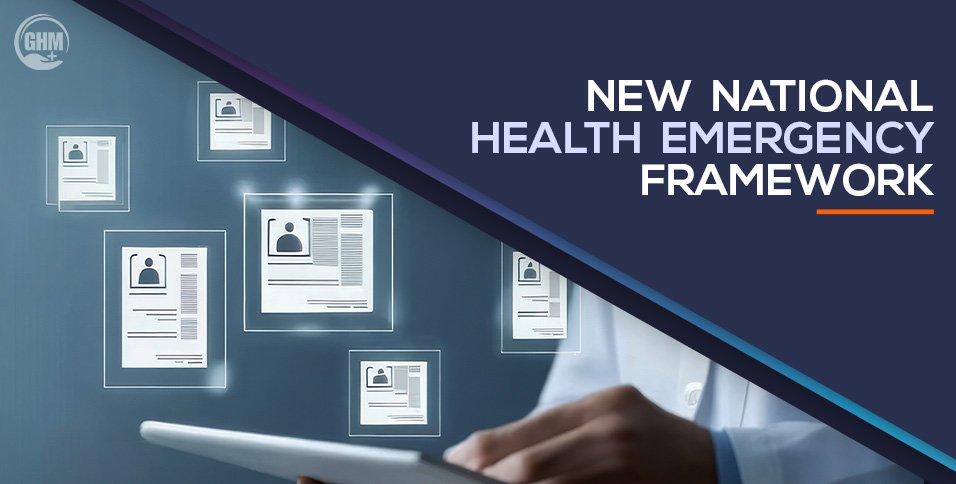The World Health Organisation (WHO) has launched new country guidance for National health emergency coordination. It is a framework that could redefine how nations detect, respond to, and recover from crises such as disease outbreaks or natural disasters.
The new guideline, introduced in October 2025, comes amid growing global awareness of how fragmented systems slowed down the COVID-19 response. It aims to help countries strengthen their National Health Emergency management through smarter use of technology, real-time data, and digital tools.
What WHO’s New Guidance Means
The WHO’s guidance focuses on building a coordinated, country-level system for health emergencies, ranging from pandemics to chemical or climate-related crises.
Key goals include:
- Faster detection of health threats through real-time surveillance.
- Seamless communication between national and regional authorities.
- Integration of health, environment, and data sectors.
According to the WHO’s statement, “every country must have a functional emergency coordination mechanism that is predictable, accountable, and data-driven.”
The new model links directly to the WHO’s 7-1-7 framework: detect within 7 days, notify within 1, and respond within 7.
But this time, the push is digital: early detection and faster alerts through technology and cross-sectoral data systems.
Role of Technology In National Health Emergency Response
1. Real-Time Surveillance Networks
Under the new WHO guidance, nations are encouraged to strengthen digital disease surveillance. Platforms that automatically collect and analyse hospital, laboratory, and even environmental data can identify outbreaks before they spread.
For instance:
- AI-driven dashboards can alert health departments to unusual spikes in symptoms.
- Mobile reporting tools enable remote clinics to send instant case updates.
Such systems can make the difference between a local outbreak and a nationwide emergency.
2. Interoperable Data Systems
One of the biggest lessons from the COVID-19 pandemic was the lack of communication between different health data systems. The WHO now recommends creating interoperable national databases.
These are digital platforms where ministries, hospitals, and emergency teams can share information securely and instantly. This not only speeds up decisions but also reduces duplication and errors during crisis response.
3. Digital Coordination Hubs
Countries are being guided to establish National Emergency Operations Centers (NEOCs) powered by digital dashboards. These centres serve as “command rooms” for health crises. It combines satellite data, social media trends, and public health reports in one view.
The WHO notes that “data integration and visualisation tools” can improve coordination across ministries, ensuring resources like vaccines, staff, and supplies reach where they are needed most.
4. AI and Predictive Analytics for Early Warning
Modern National Health Emergency systems are moving from reactive to predictive. Artificial Intelligence (AI) can model outbreak trajectories, estimate hospital surge needs, and even forecast the impact of weather events on disease spread.
For example:
- Machine learning tools can predict dengue or cholera spikes based on rainfall and temperature.
- Predictive models can help plan vaccine distribution or quarantine zones before infections escalate.
What the Guidance Means for Countries
The WHO guidance acknowledges that not all nations are equally prepared. Many low- and middle-income countries lack the digital infrastructure needed for real-time monitoring.
However, the new framework includes capacity-building measures:
- Standard templates for emergency coordination.
- Technical training for data management.
- Partnerships with technology providers and donors.
According to WHO officials, the goal is not just to digitise, but to decentralise, empowering local authorities and communities with real-time access to information.
New Era of Data Governance in Health Emergencies
Data transparency and security remain top priorities. The guidance outlines clear protocols for data sharing that respect privacy while ensuring open access for emergency responders.
This approach strengthens accountability and public trust, two vital pillars of a National Health Emergency Response.
As the WHO’s Health Emergencies Programme Director explained, “Digital readiness is now as important as medical readiness. The countries that invest in data systems will respond faster, coordinate better, and save more lives.”
Global Lessons from COVID-19 & Beyond
The COVID-19 pandemic was a wake-up call for the entire world. Fragmented data, delayed notifications, and weak digital networks cost valuable time.
By embedding technology and data tools into every level of emergency coordination, the WHO aims to ensure that no nation is caught unprepared again.
The new guidance is both a blueprint and a challenge to make every National Health Emergency Response faster, smarter, and more resilient.
Towards Building Smarter Health Security
Technology alone cannot prevent the next pandemic, but it can ensure that nations act faster and more effectively.
As countries begin implementing the WHO’s recommendations, the success of a National Health Emergency will depend on more than budgets and policies. It will depend on the smart use of data, digital collaboration, and the shared will to protect every community.
The new guidance signals a clear shift from reaction to prediction, from isolation to integration, and from confusion to coordination.
Key Takeaways
- WHO’s 2025 guidance marks a major shift toward data-driven emergency coordination.
- Digital tools, from AI forecasting to mobile surveillance, will form the backbone of future National Health Emergency Systems.
- The focus is not just on detection but on coordination, accountability, and equitable access to real-time information.
- Building capacity for data sharing, training, and interoperability is crucial for developing nations.



















